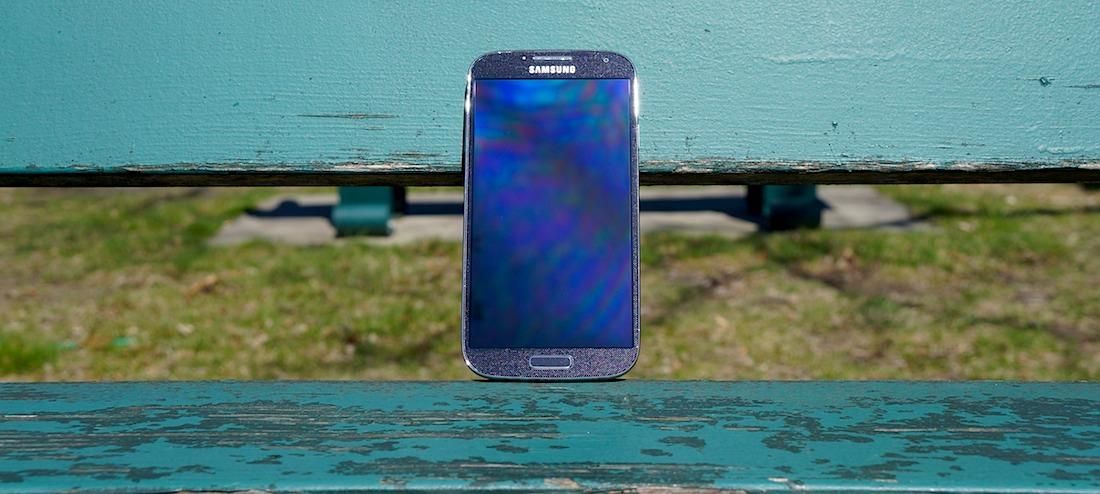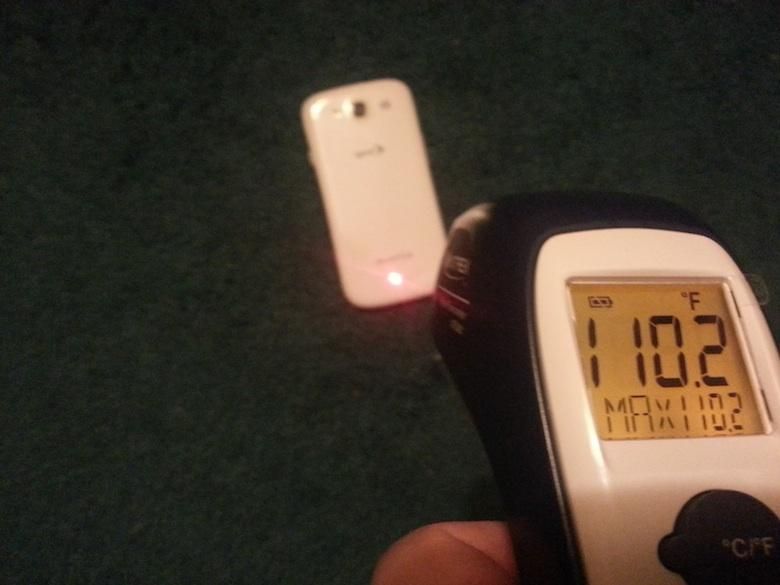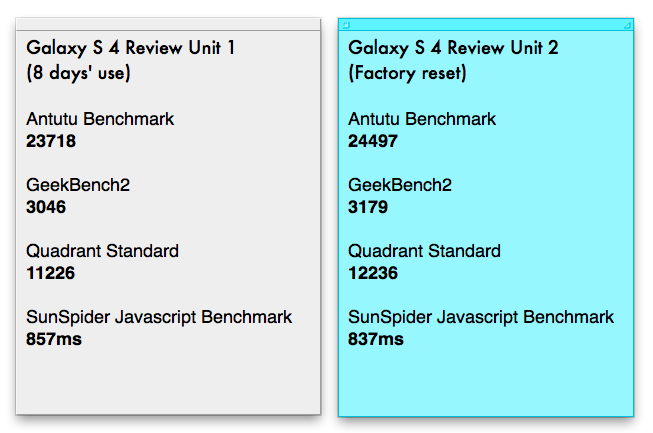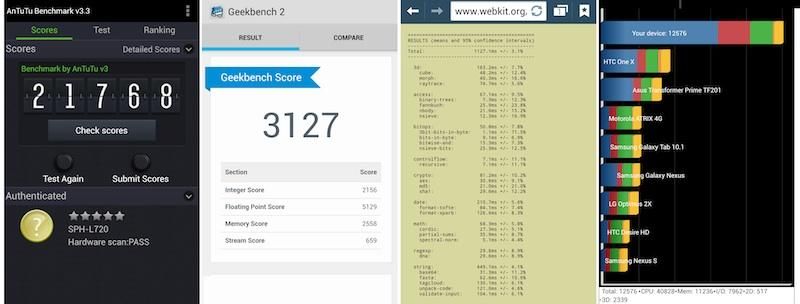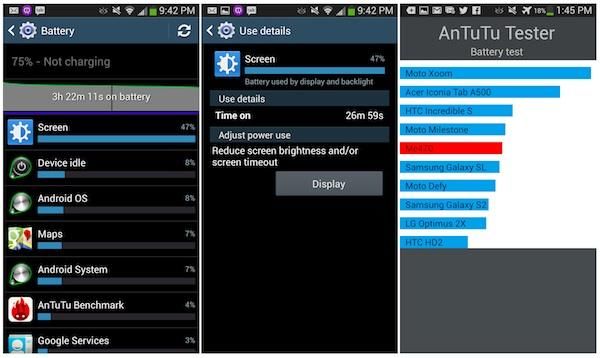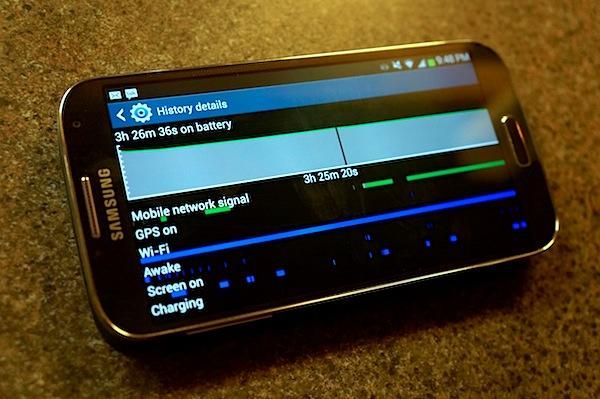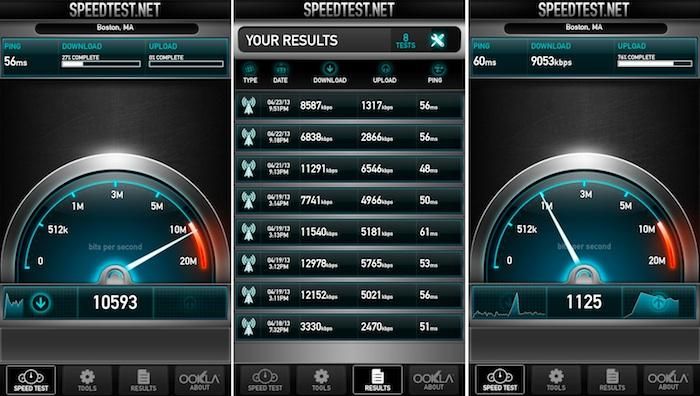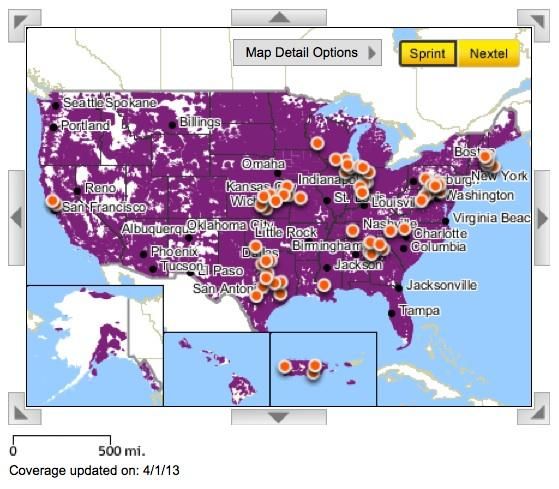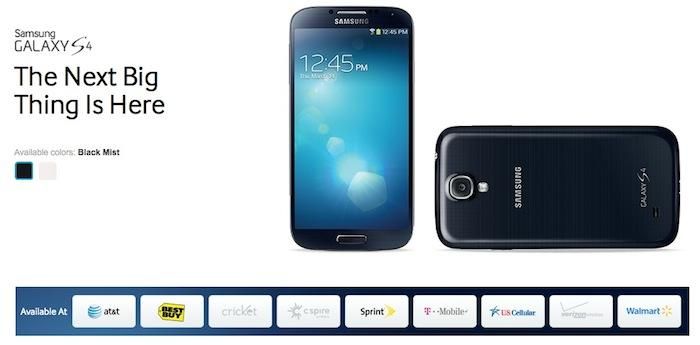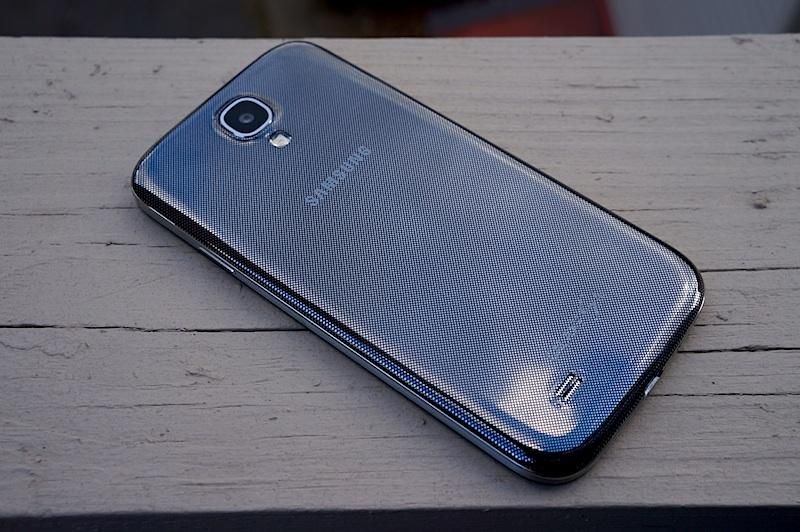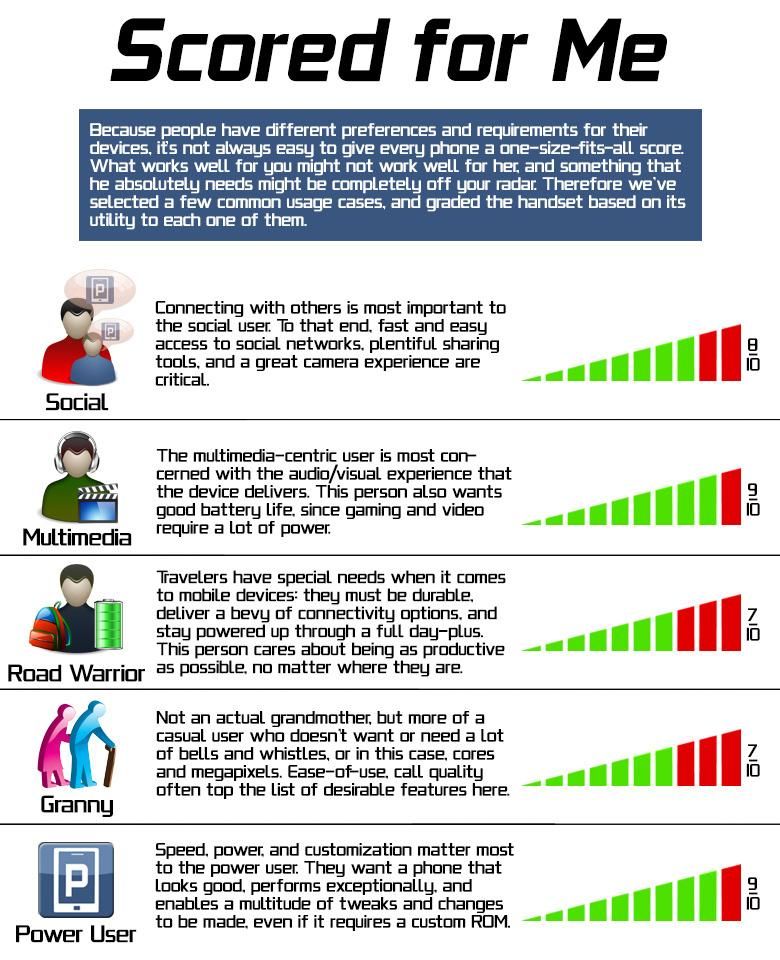There are a lot of things the fourth smartphone in Samsung’s halo Galaxy S series is not. It’s not a reinvention, or a revolution. If it were a movie, the Galaxy S 4 wouldn’t be the blockbuster revival of a flagging film franchise: the reboot that kicks a sagging series back into high gear.
That’s because the Galaxy S line has never been a disappointing one. For years, Samsung’s flagship smartphone series has dominated the Android landscape, making the word “Galaxy” synonymous with Google’s platform in much of the public vernacular. Last year’s Galaxy S III accelerated that trend, bringing an avalanche of new features stuffed into some of the most advanced hardware available, and earning high praise in our reviews.
The device formerly known as the New Hotness.
This year, Samsung seems reluctant to fix what ain’t broke. The Galaxy S 4 evidences a conservative approach to evolution in a world that demands a new flagship phone every year, necessary or not. It looks, feels, and even acts a lot like its predecessor – but don’t judge a smartphone by its casing: there’s a lot of new material here. From specs to styling, the S 4 is the epitome of an ultra-modern Android smartphone.
The important question then arises: is it a good smartphone? We spent seven painstaking days finding out. Join us as we examine the ins and outs of one of the year’s most anticipated mobile devices. Join us as we deconstruct the Samsung Galaxy S 4.
Videos · Specs · Hardware · UI · Camera · Performance · Battery Life · Call/Network · Pricing/Availability · Conclusion · Scored For Me
Video Review & Comparisons
Indoors, colors are just slightly grainier, but the Galaxy S 4’s microphone bears up well under the disparate conditions of sedate music and an arriving train. We’re not sure we’d want to take the S 4 to a concert, and its lightweight build means our shivering hands don’t always produce the smoothest output, but that’s what digital image stabilization is for (it’s turned off in each of these videos).
We’re approaching the point where mobile photography is so prevalent that the declaration “it takes great shots, for a phone” is almost a backhanded compliment. But that’s exactly what the Galaxy S 4 offers. It builds on the legacy of its predecessors, pushing the boundaries of fun smartphone photography forward through a balanced combination of specs and features. There aren’t any flashy buzzwords like “UltraPixel” or “PureView” here -and the mediocre low-light performance confirms that- but by and large, they’re not needed. Taken in total, the experience of shooting pictures on the Galaxy S 4 is an excellent one.
Performance
Click to expand.
In synthetic benchmarks, the Galaxy S 4’s guts do it proud. The device keeps pace with the similarly equipped HTC One and lays waste to older smartphones packing last-generation hardware, at least on paper.
Update: Some folks brought to our attention a disparity between our benchmark results and those of other sites. We re-ran the GeekBench2, AnTuTu, SunSpider, and Quadrant Standard battery on both of our Sprint review units -one of them after a factory reset, the other after eight days’ use- and came up with the following results. Only the SunSpider scores show a significant deviation from our original findings.
In the real world, the Galaxy S 4’s performance is almost as impressive. Streaming HD content via Netflix went off well enough, and the browser doesn’t choke on pages laden with heavy graphical content. App load times are brief enough not to mess with our flow, and modern gaming titles work well enough – though we did have some trouble with older games like Rise Of Glory on both the Galaxy S 4 and the HTC One. Whether this is due to the new generation’s 1080p displays or some other optimization problem, we don’t know. As always, buyers of new smartphones should take note that older apps may experience compatibility issues at first. Not to worry, pig-slayers: Angry Birds Star Wars plays just fine on the GS 4’s hardcore hardware.
In normal, day-to-day operations, the Galaxy S 4 isn’t quite as zippy as we’re used to seeing from Samsung hardware. Frames routinely drop during app opening and closing animations, and a slight lag pervades a few corners of the OS. Again, there might be some optimization yet to happen on the software side of things; an over-the-air update should clear up these minor bumps. Still, it’s disconcerting to see any lag on such a powerful device supposedly running final software.
Audiophiles have something to look forward to in the Galaxy S 4: Samsung’s relocation of the speakerphone to the lower half of the phone apparently freed up some space to make it bigger as well, and the new module is loud. While we’d still prefer a front-firing speaker -better yet, a pair of them- the increased output really helps when gaming, watching video, or playing music. For more private listening, Samsung has bundled redesigned earbuds with the Galaxy S 4; the device’s output through the headphone jack seems well-balanced, matching the HTC One in volume and even keeping up in terms of bass. Casual listeners should find little to complain about.
Battery Life
Testing smartphone battery life is difficult. There are hundreds, perhaps thousands of variables that affect power consumption on a mobile device, and everyone uses his or her smartphone differently. In our experience, while homegrown tests like continuous video playback do offer concrete benchmarks for comparisons, they’re not terribly applicable to the real world. Anecdotal reports are by their very nature less precise, but we find them more useful to a greater number of readers.
Nevertheless, in an effort to improve our battery testing methodology, we’ve begun using AnTuTu Tester to provide some baseline metrics. In our week-long review period, we’ve run the Galaxy S 4 through the app’s battery test several times. Our test unit consistently scores a 470, higher than that of the Sprint HTC One, which scores a 408.
In real-world use, the Galaxy S 4 usually got us through a day of moderate to heavy use. One particular test is illustrative of a typical “heavy” day: on this occasion, the device hopped between WiFi, 3G, 4G LTE, and no-service conditions continuously as we traveled across town, underground on the subway, and in and out of buildings. One Gmail and one Exchange email account continuously fetched emails, while Facebook, Twitter, and Instagram apps simultaneously listened for updates. We browsed, tweeted and emailed occasionally, texted often, and used Google Maps and Google Navigation for a total of 90 minutes. Between two and three brief phone calls were exchanged. In this “heavy” usage pattern, the device lasted twelve hours from full charge to exhaustion.
Power users are advised to remember that the Galaxy S 4 represents an especially dense collection of power-sucking features. Between the LTE radio, high-speed CPU, bright 1080p display and other energy-drainers, the device has the capacity to exhaust even a larger battery quite quickly. Fortunately, the removable power pack means heavy users will be able to tote around an extra battery with little fuss, should they feel the need.
Call Quality/Network Performance
Our testing period took us from the streets of New York City to the suburbs of Greater Boston to the docks of Salem, and everywhere in between. The device’s reception appears excellent; our two Galaxy S 4 demo units routinely show stronger signal than our HTC One, with the difference usually on the order of 15-20 dBm between them. That’s a significant gulf, and it gives us confidence that the Galaxy S 4’s radio is well-suited to its primary task.
A smartphone is only as solid as its network, though, and the Now Network still isn’t mature enough in our area to deliver the kind of reliable performance that its more-established competition can. Speeds over LTE were moderate to good; we averaged about 10 Mbps down and 4 to 5 Mbps up during our test period, when we could get signal. All too often, though, we found ourselves with slower throughput -particularly indoors- and rather severe connectivity problems in fringe areas. Sprint’s CDMA roaming agreements with Verizon Wireless are theoretically meant to ensure that customers have service even outside of Sprint’s coverage areas; in practice, our Galaxy S 4 waffled indecisively between networks, often holding on to an unusably bad Sprint signal instead of jumping over to a strong Verizon Wireless one. Hey, we get it, Sprint: you need to save money. But providing a bad experience in fringe areas isn’t the way to do it.
Orange dots = bright points of LTE joy in a purple sea of EvDO despair.
Call quality is another low point for the Galaxy S 4. In a battery of “blind” phone tests, callers gave us only an average grade -7 out of 10- for audio quality, with more than one conversation partner telling us we sounded “muddy.” When asked to compare audio quality with the older Galaxy S III, callers couldn’t decide which phone we sounded better on – but everyone agreed we sounded significantly clearer on the Galaxy Note II than we did on the Galaxy S 4. Noise cancellation was also disappointing, our conversation easily disrupted by a stiff breeze, and audio quality on our end was similarly unimpressive. The calling experience isn’t necessarily bad on the Galaxy S 4; it’s just decidedly average. That’s not the kind of performance we’ve come to expect from flagship smartphones.
Pros
+ Beautiful display
+ Large removable battery
+ Expandable storage
+ Solid camera with excellent feature set
+ Elaborate sensor and radio package
+ Some software features show potential
Cons
– Uninspiring aesthetics
– Dated UI with only average responsiveness
– Samsung features are more gimmick than useful addition
– Mediocre call quality
Pricing and Availability
Like its predecessor, the American version of the Galaxy S 4 will eventually be offered by all four U.S. national carriers. Samsung has its own pre-release info hub, including carrier and retailer information, here. Radio Shack announced yesterday that the Sprint and AT&T versions would be available starting April 27, and preorders are currently open at AT&T, Sprint, T-Mobile USA, U.S. Cellular, Best Buy, and Walmart.
The full retail price varies across sales channels and depends on device capacity, but AT&T quotes a cost of $639.99 for the 16GB version ($199.99 on contract). The retail version of our 16GB Sprint variant will sell for $599.99 from the nation’s yellowest carrier, but discounts and promotions can bring that cost down as low as $149.99 on a contract.
Conclusion
Contrary to what the extreme sides of the pro and con camps would have you believe, the Galaxy S 4 is neither an overachieving champion, nor crushing disappointment. But with its powerful feature set and lofty legacy, it’s also not by any means “average.”
The Galaxy S 4 is, instead, exactly what it needs to be – and nothing more. It’s a device that offers just enough improvement over its immediate predecessor to justify its existence, just enough to give penny-pinching buyers the appropriate measure of pause before trying to save some dough by picking up last year’s model. Its conservative design lacks the degree of inspiration we love seeing in flagship smartphones, and its software is too weighed down with half-baked gimmicks for our taste – but ultimately it’s a solid instrument.
There will come a day when Samsung can’t rely on iterative upgrades and dubious “features” to capture attention and sell smartphones. That day, however, is not today. While the company will no doubt feel a bit of pressure to innovate more extensively going forward, it will still sell millions upon millions of Galaxy S 4s in the meantime. And based on what we’ve seen during our time with the unit, that’s a pretty good thing.
Scored For Me
___
Special Scoring Note: Although the review unit provided by Samsung was a Sprint variant, the indicated score represents our ranking of the American Galaxy S 4 as a whole. Were we to rank this device while taking into account the carrier experience, we would award it a score of 8.4.

